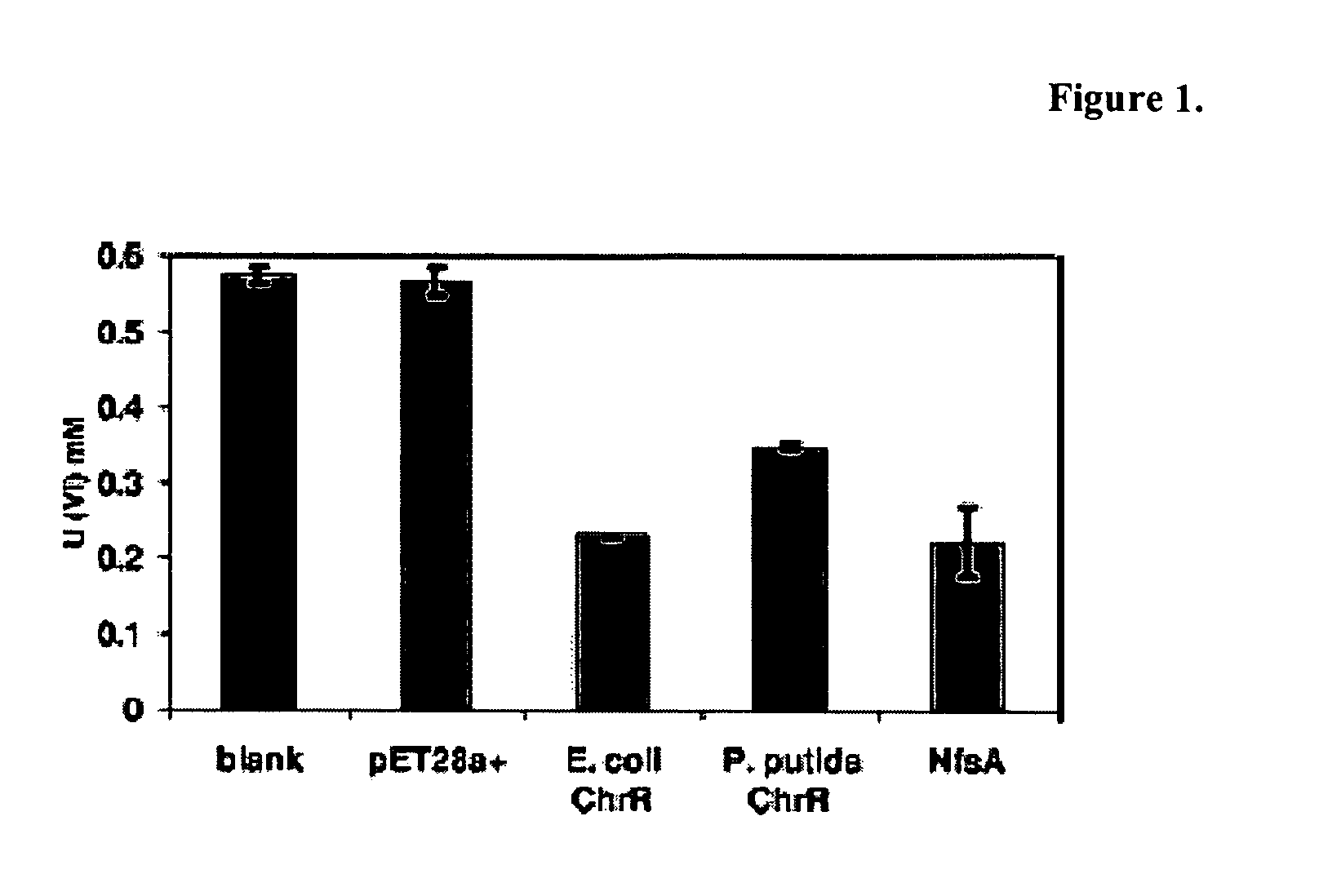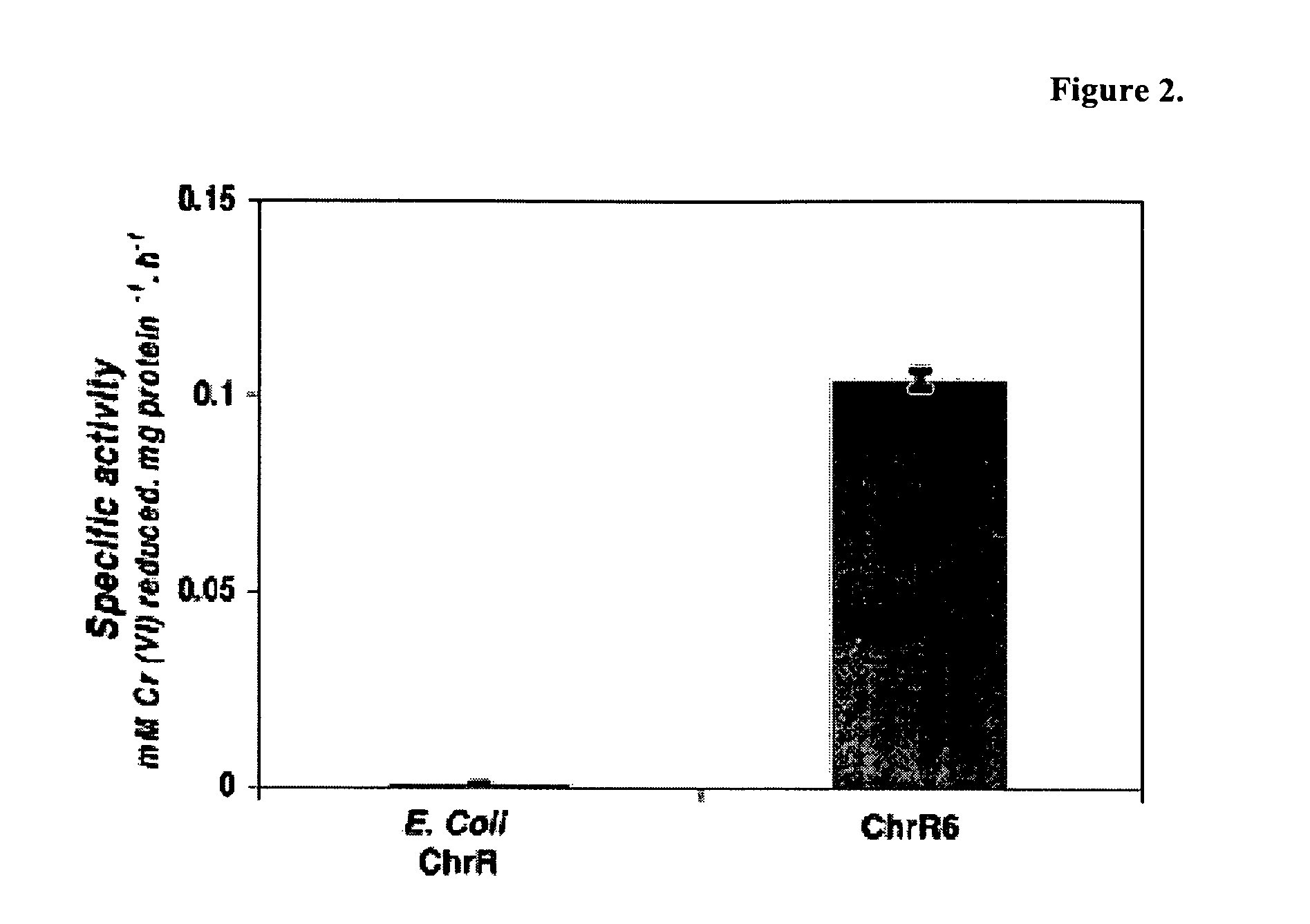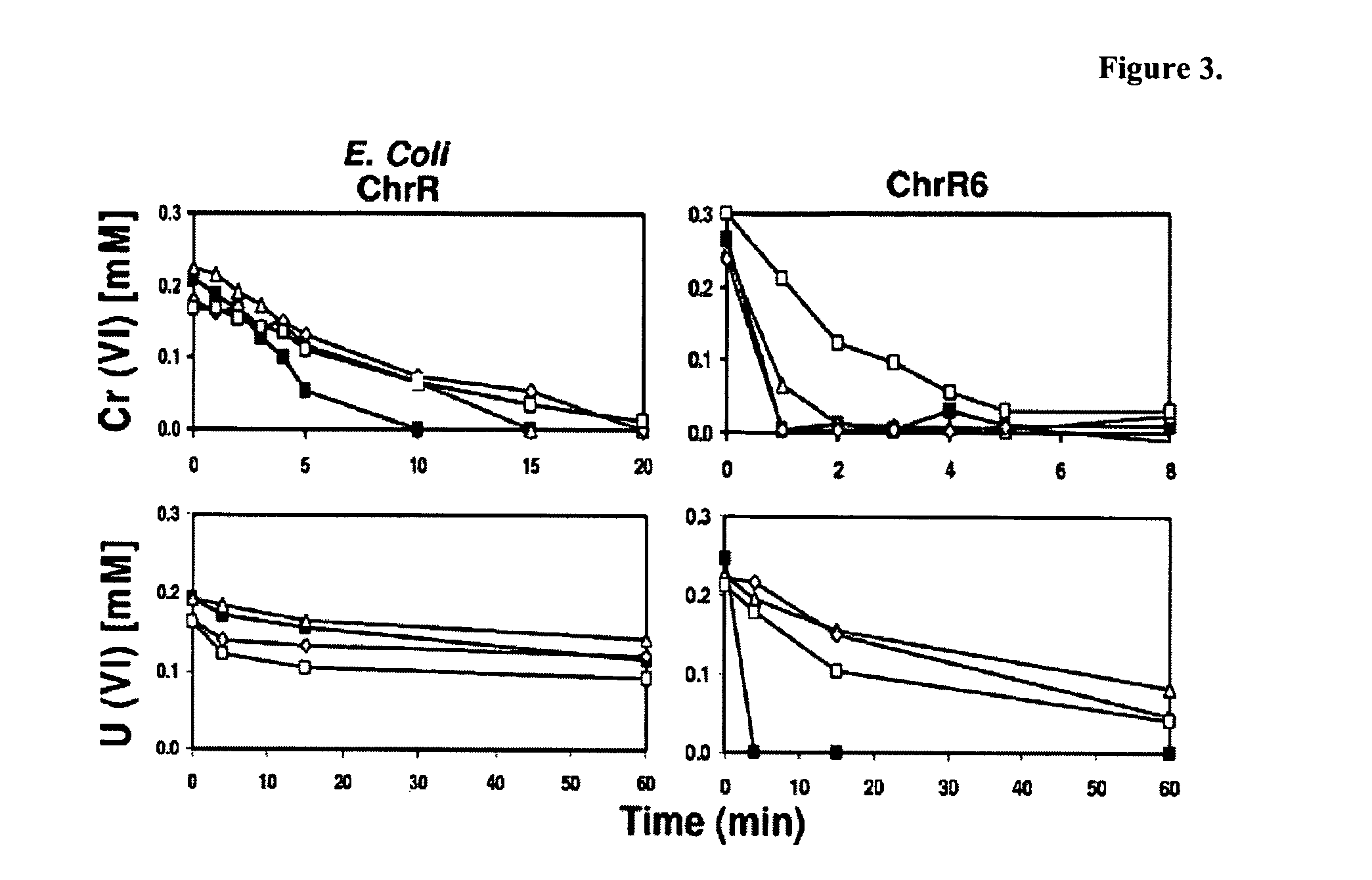Nitroreductase enzymes for bioremediation
a bioremediation and enzyme technology, applied in the field of nitroreductase enzymes for bioremediation, can solve the problems of large-scale uranium contamination of soils, sediments and waters, and the potential of contaminating natural waters, so as to improve the capacity for remediation, reduce the intracellular chromate and uranyl, and minimize the chance of reoxidation
- Summary
- Abstract
- Description
- Claims
- Application Information
AI Technical Summary
Benefits of technology
Problems solved by technology
Method used
Image
Examples
Embodiment Construction
[0025]Methods are provided for bioremediation, the methods comprising contacting a contaminated composition, e.g. soil, water, etc. with microorganisms over-expressing the nitroreductase enzyme ChrR (YieF), usually a non-native ChrR, and more usually a non-native ChrR having enhanced enzyme kinetics for reduction of toxic metals, relative to the wild-type E. coli enzyme. Such microorganisms catalyze a one step reduction of Cr(VI) to Cr(III); and / or U(VI) to U(IV).
[0026]Unless defined otherwise, all technical and scientific terms used herein have the same meaning as commonly understood by one of ordinary skill in the art to which this invention belongs. Although any methods and materials similar or equivalent to those described herein can be used in the practice or testing of the present invention, the preferred methods and materials are now described. All publications mentioned hereunder are incorporated herein by reference. Unless mentioned otherwise, the techniques employed herein...
PUM
| Property | Measurement | Unit |
|---|---|---|
| pH | aaaaa | aaaaa |
| pH | aaaaa | aaaaa |
| pH | aaaaa | aaaaa |
Abstract
Description
Claims
Application Information
 Login to View More
Login to View More - R&D
- Intellectual Property
- Life Sciences
- Materials
- Tech Scout
- Unparalleled Data Quality
- Higher Quality Content
- 60% Fewer Hallucinations
Browse by: Latest US Patents, China's latest patents, Technical Efficacy Thesaurus, Application Domain, Technology Topic, Popular Technical Reports.
© 2025 PatSnap. All rights reserved.Legal|Privacy policy|Modern Slavery Act Transparency Statement|Sitemap|About US| Contact US: help@patsnap.com



